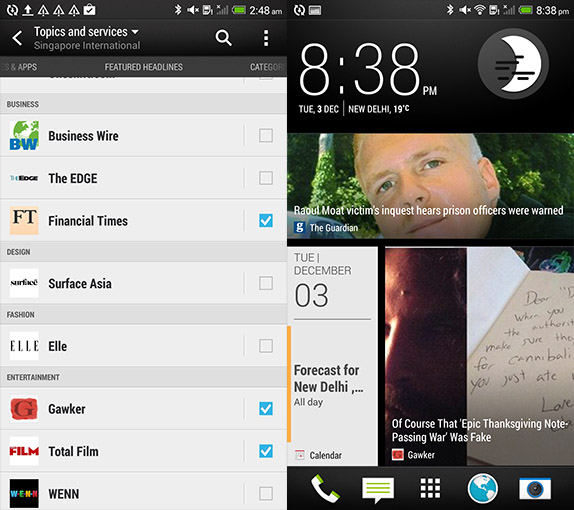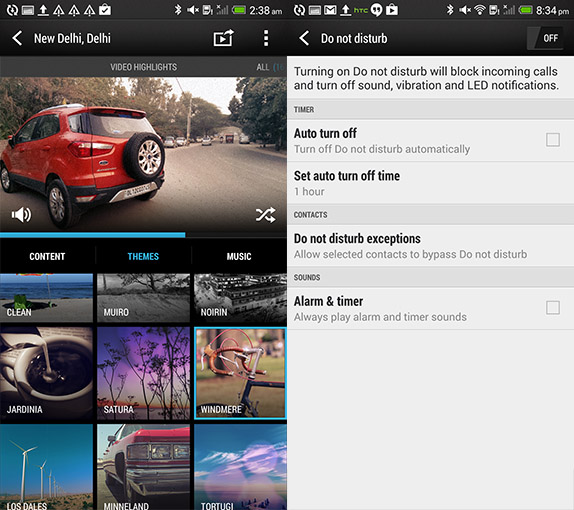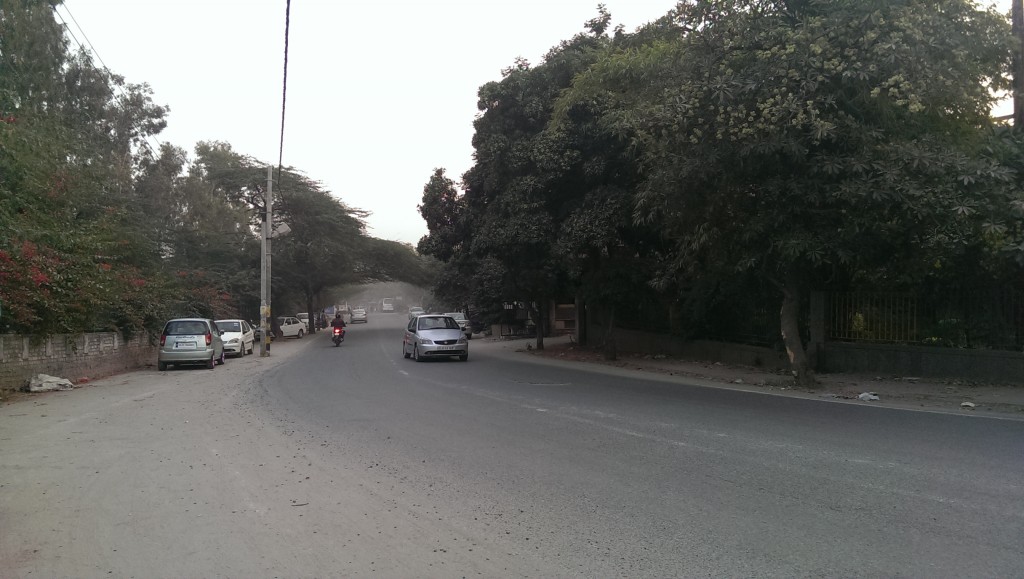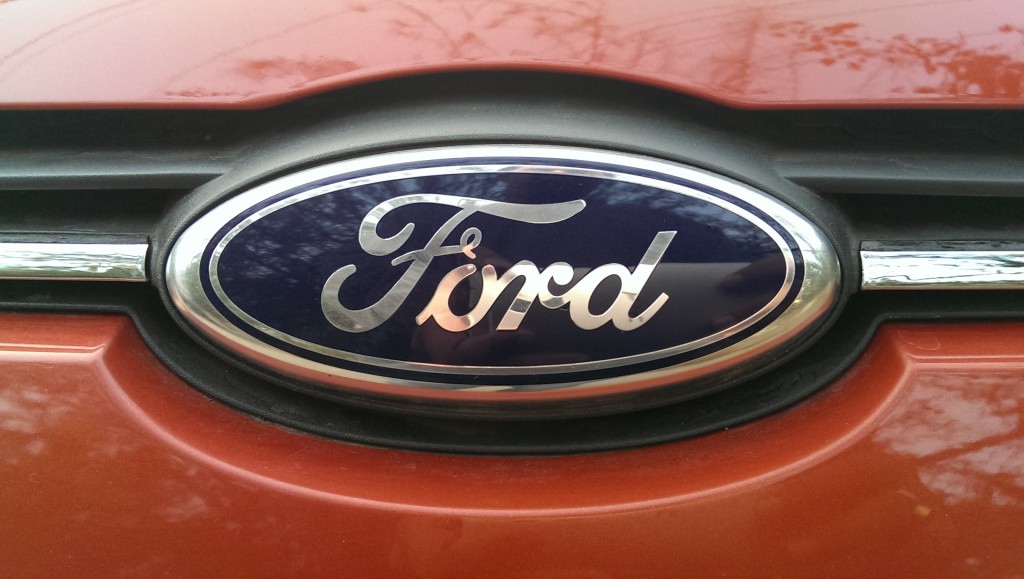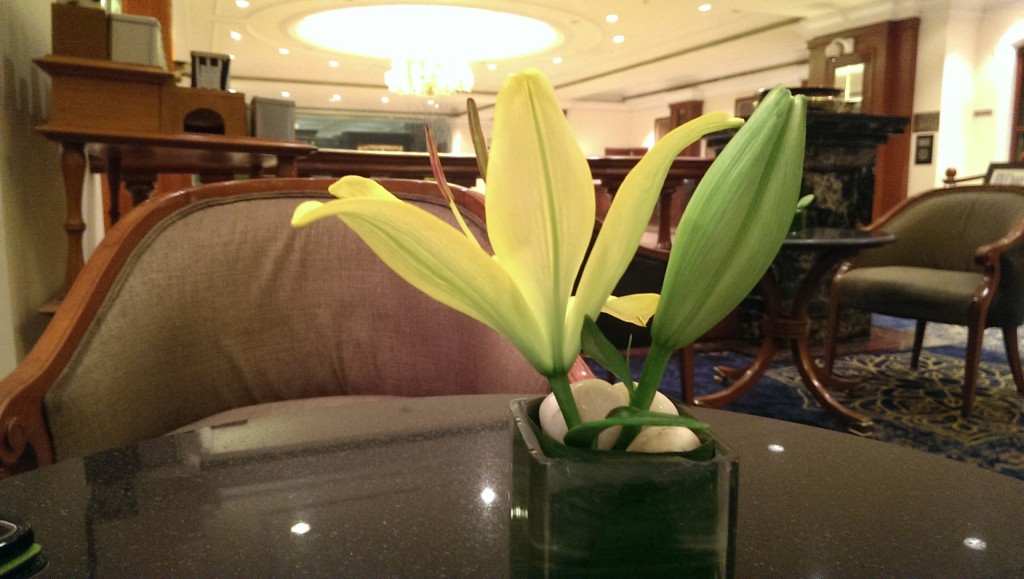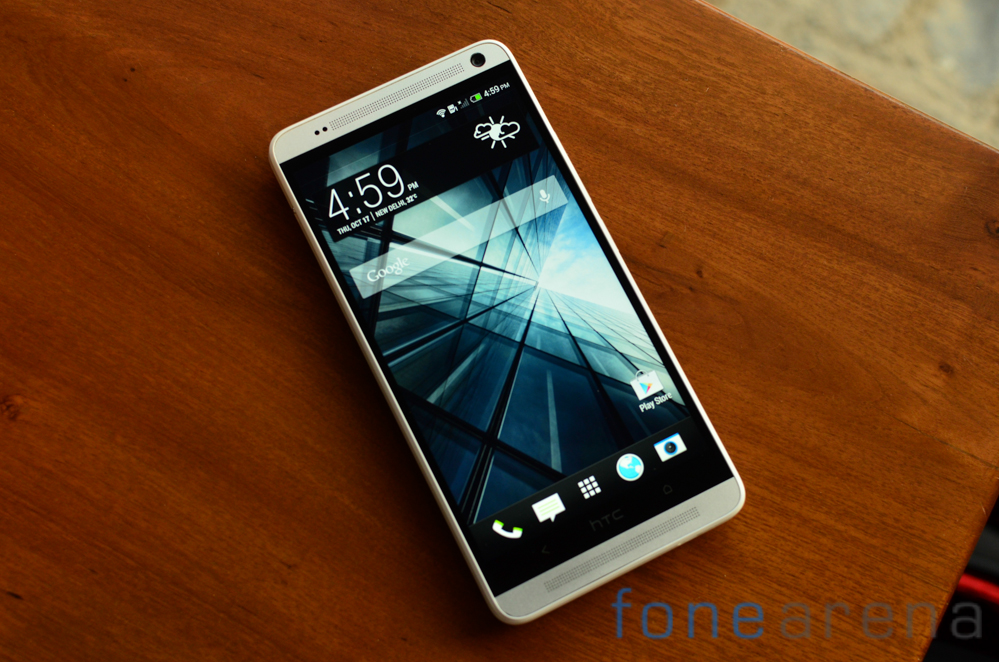
Phablets are a reality. Often passed over as a fad, the large number of successful giant sized devices has proven that there is a demand for these phones. With the One Max, HTC is going after the Samsung Note 3. The end result is an HTC One that has been stretched to fit in a larger display while introducing a few new forgetable features. Read through our review to figure out if this behemoth is worth the small fortune that HTC is demanding for it.
Unboxing
Here’s a video unboxing of the phone to get you started. You can see the contents of the retail packaging of the HTC One Max.
httpv://www.youtube.com/watch?v=tAteHqHsrdg
Hardware
While the HTC One was a pioneering design, follow up handsets have been more or less iterations of the same base unibody aluminum shell. Look closely and you’ll notice that the One Max is more HTC One Mini than the original One. There is liberal use of plastics with aluminum panels inlaid on the front and back. The dimensions are of the phone are huge at a length of almost 6.5 inches. The phone is one of the heaviest that we’ve used in recent times and weighs a positively hefty 217grams.
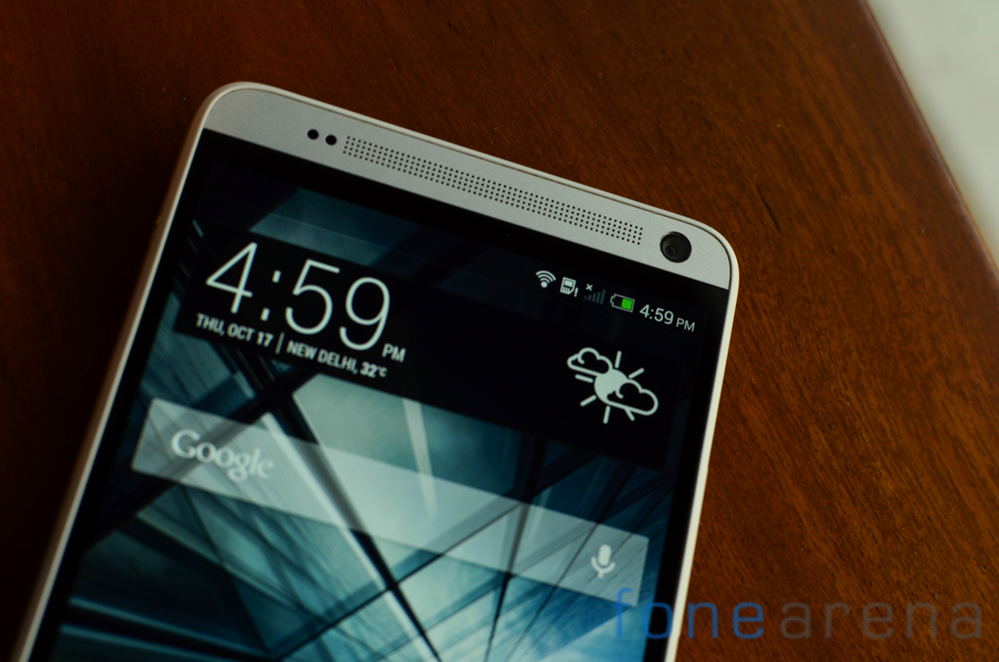
The front of the phone is predictably domninated by the huge 5.9 inches Full HD display. Surrounding it is a black bezel that melds into the white plastic on the sides. Above and below are the aluminum insets with speaker grilles on both sides. A front facing camera, proximity & ambient sensor can be found at the top right and left respectively.
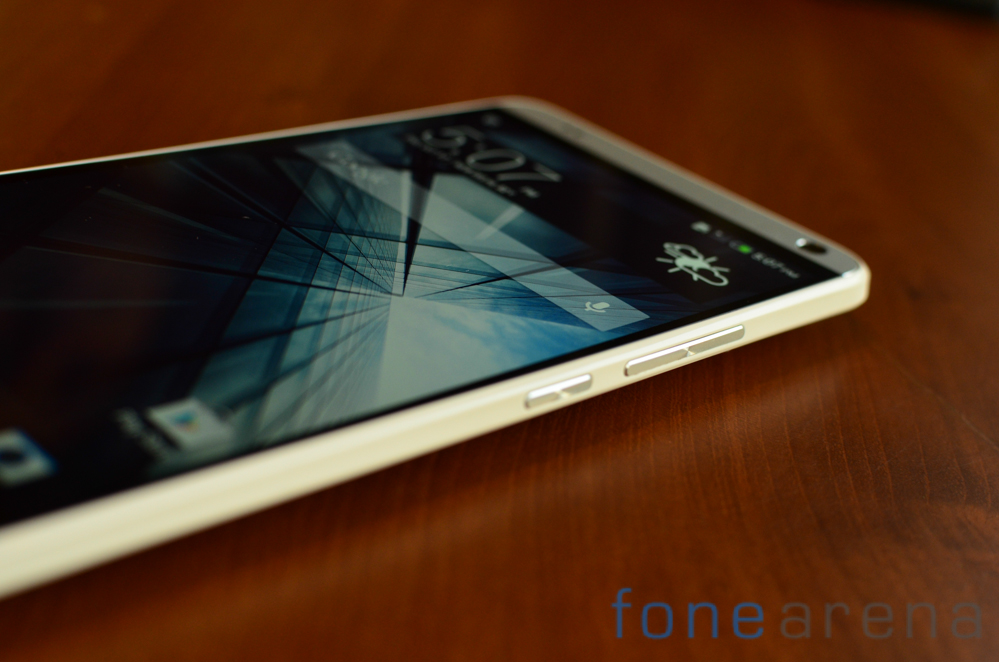
The right side of the phone is where you’ll find the volume rocker and power button. The buttons have an etched aluminum finish and feel great when pressed. We felt that tactile feedback was a bit lacking but the buttons were responsive enough still. Over on the left you have a miniscule lever. You’ll be mistaken to think of this as a mute button. The spring loaded lever is used to prop open the back cover. The lever is surprisingly hard to activate but we really don’t think you’ll be propping open the back cover every day so this is less of an issue.
The top of the phone has the 3.5mm audio jack as well as the IR port. We’re very happy to see the recent trend of including IR transmitters in high end handsets as they add an additional level of functionality to smartphones ie home automation and control. The micro USB port lies at the bottom of the phone right next to the microphone port.
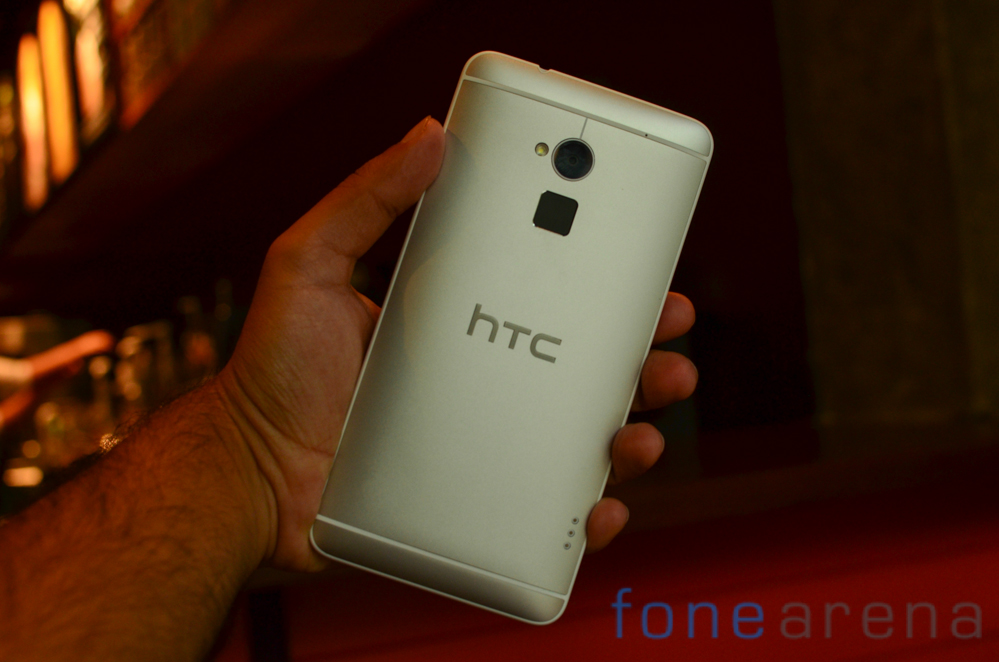
Over at back is where things get interesting. The entire panel is split in three segments with plastic bands segregating it. The central panel pops open on actuating the lever mechanism and under it lies the SIM card slot as well as the microSD port. Unfortunately, the battery is still not user accessible. There are also industrial design issues here. The rear panel does not sit flush with the handset and there are noticeable gaps in the seam. In the bottom right corner you can see the pogo pins that are used to attached the phone to the power case. Towards the upper half you can spot the 4MP UltraPixel camera as well as the fingerprint reader. We’ll talk more about this in a bit.

Over all, the design is a play on that of the One. We’re a bit disappointed to report that the handset doesn’t really exude the luxurious, high end feel that was so evident in the One. The chamfered edges that made the original look so very beautiful are absent here. The white plastics while high quality, are quite prone to catching dirt. Add to that the panel gaps and you are left with a phone that loses the essence of the original and looks very ‘ordinary’.
Fingerprint Scanner
While we continue on the theme of hardware, it is apt to give the fingerprint scanner its own section. HTC is no stranger to biometrics embedded in phones and has dabbled with fingerprint readers during the Windows Mobile era as well. This is however its first foray into Android phones with built in fingerprint scanners possibly motivated by the Touch ID sensor embedded in the iPhone 5s. We’ll however refrain from pursuing that argument and instead focus on whether HTC has made a compelling use case for it on the One Max.
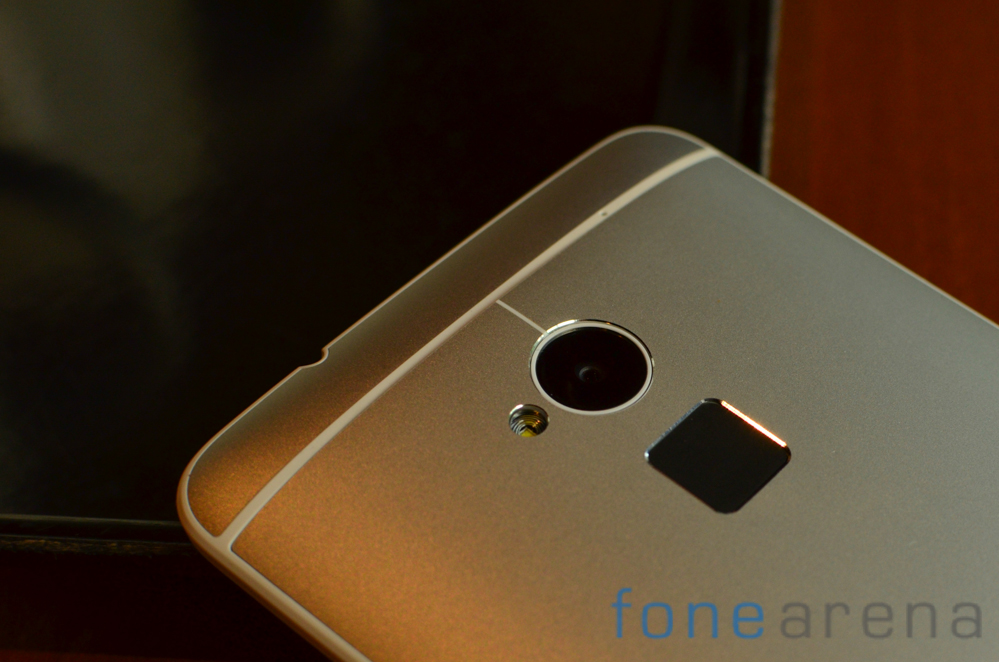
The sensor measures the capacitance of your skin to create a signature and tends to have a success rate of 80-90%. Not perfect but pretty good. The unwieldy dimensions of the phone mean that getting to the scanner in the first go is definitely hit or miss. We usually ended up swiping over the camera module and then straight down to the scanner. It works but isn’t particularly comfortable and not even close to as well integrated as Touch ID on the iPhone.
Moving on to the software component, given that Android does not natively support fingerprint scanners in Jelly Bean, HTC have built an entirely custom implementation to make use of the hardware. It is possible to scan and ‘store’ three separate fingers. These can attached to shortcuts to launch separate actions. The shortcuts can range from unlocking the phone, launching the camera to switching over to your messaging app.
In day to day usage, we just couldn’t integrate the fingerprint scanner into our usage patterns. It was just too unwieldy to reach and the software implementation was more cumbersome than it should be. Suffice to say, this is far from a reason to go for the phone and we really wouldn’t miss it if it was gone. Till the time the software bakes in proper support for the fingerprint scanner and allows you to do meaningful stuff like entering passwords, it just isn’t and should not be a major factor in your purchasing decision.
Software
The HTC One Max runs Android 4.3 with a Sense 5.5 based ROM on top. This is an enhanced version of the skin that we’d previously seen on the One. Changes have been made to accomodate the larger display but we think HTC could have gone the extra mile with actual changes appearing to be fairly trivial.
You can now have another row of icons on the homescreen. Sense 5.5 now gets a “Do Not Disturb” mode that silences all notifications and blocks calls except for those from a whitelist.
The love or hate BlinkFeed feature can now be completely switched off if that’s what you wish. It has also been beefed up and now lets you add custom RSS feeds, Keyword based custom topics. It is now possible to save content offline to read later. The software is honestly pretty robust but the prevalence of cross platform services like Feedly and Flipboard make it look less impressive and a bit unnecessary.
The gallery application remains one of the better ones and has a spruced up video highlights section. Instead of the Friends category, you now get an HTC Shares section. You can manage the rather small 250MB of storage space that you get from here and interact with comments too. The video editor is fairly intuitive and rather fun to play with. There’s a range of hollywood style themes that you can apply to your clips and the new theme engine can time transitions to the beat of the music. You can have clips beyond the standard 30 second duration if you choose to use your own tracks.
HTC’s Sense 5.5 ROM is one of the better looking ones out there and is very well optimized for the hardware. You get a couple of applications baked in and this includes Polaris Office, Stocks, Kid Mode and Car Mode. You also get a Scribble application than you can use to doodle in using a capacitive stylus or your finger if you so wish.
Performance
Powering the show is a 1.73Ghz Snapdragon 600 processor with an Adreno 320 GPU. Paired with this is 2GB of RAM which proves sufficient for all sorts of multitasking. We put the phone through its paces and never faced any interface lags or performance hiccups. Sense 5.5 is very well optimized for the hardware which ensures that things remain smooth all around. Even with demanding games, the One Max had no trouble at all playing them full speed. The phone did become a bit warm to the touch but that’s to be expected, moreover the aluminum build helps in heat dissipation. We put the phone through a suite of synthetic benchmarks to get some concrete numbers relating to the performance and to be able to compare the phone with others in the category. You can see the results of that below.
httpv://www.youtube.com/watch?v=2oifEGuG7Ec
In the Quadrant benchamark, the phone scores 12453 points which is a very decent score. It is of course left behind by the upper tier Snapdragon 800 processor based phones but real world differences are few.
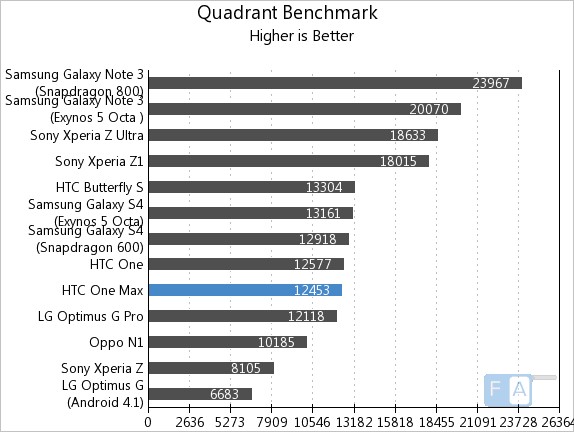
In the GPU centric GFXBench test, the One Max manages 14FPS which is behind Snapdragon 800 based devices once again.
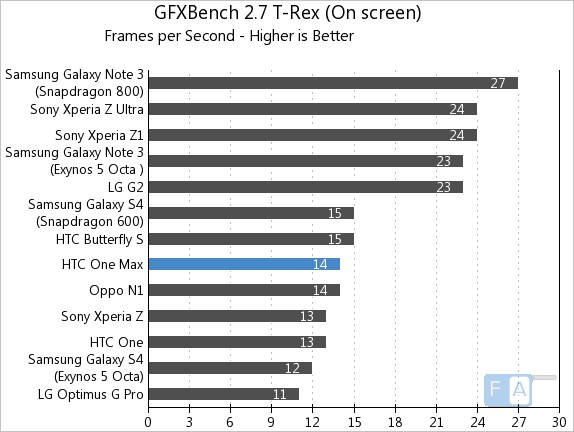
The phone is not the best when it comes to benchmarks but it won’t be apt to judge it based on synthetic scores alone. General usage is absolutely fine with nary a lag or frame rate drop. Gaming on the device is great and you won’t have any issues with playing the latest and greatest on the large 5.9 inch display.
httpv://www.youtube.com/watch?v=0U9wLneVQsA
To give you a better idea of the performance of the phone in daily usage and especially GPU centric applications like games, we made a series of videos. You can see the gaming review of the phone embedded above. Popular games like Riptide GP2 and Nova 3 ran very well as well. You can check out the performance of the games on the phone right here below.
Display
The screen on the HTC One Max is absolutely stunning. The Super LCD 3 panel gives you natural colors, excellent viewing angles, contrast and brightness levels. Outdoor visibility too tends to be top notch. Measuring 5.9 inches diagonally, the resolution is 1920 x 1080. This results in a pixel density of 373 ppi.
Camera
HTC has bestowed the One Max with a 4MP UltraPixel camera module. The sensor size is 1/3 inches and the camera is equipped with an f/2.0 lens. The camera lacks the optical image stabilization assembly that was present in the One. We are inclined to believe that this is the same camera module as the one in the Butterfly S. Daylight performance isn’t bad but we can’t say that we were highly impressed.
Shots tend to have a hint of noise. We also noticed that the phone loses a fair bit of detail in the shadow regions. The fast shot to shot time is definitely appreciated and we quite liked the macro capabilities of the phone.
As mentioned above, the macro capabilities of the camera module are surprisingly good and perhaps even slightly better than the camera on the One. The limited dynamic range however frequently resulted in overblown highlights. This is evident in the shot below where the sky in the background is blown out.

The benefits of UltraPixel technology are most evident in low light conditions. As you can see in images below, noise is mostly kept under control. The blown highlights are particularly evident however and somewhat ruin a fairly well captured shot.
While the likes of Sony and Nokia have gone down the oversampling route to reduce the noise in high resolution shots, HTC has opted for larger pixel size. This means that you’ll not be able to crop into shots and zoom in.
The lens also suffers from a bit of optical abberation that can be noticed below where the straight line appears to bend slightly. Lens flares can also be a concern.
Video on the phone is captured at up to Full HD resolution. Like in images, it is possible to lock the exposure and focus. Video content is at a solid 30FPS but the actual quality is just above average. The camera struggles in less than ideal conditions. Audio recording quality in particular leaves a lot to be desired.
httpv://www.youtube.com/watch?v=NtTXv-dPUXc
Overall the camera is just about average. The One Max is definitely not going to astonish you with its imaging prowess but won’t let you down either.
Connectivity & Battery Life
In terms of storage, you get about 10GB of free memory on the 16GB variant. This can be expanded via the microSD card slot. You also get 50GB of Google Drive storage. Connectivity options on the phone range from NFC, Bluetooth 4.0, WiFi a/b/g/n as well as ac for high speed data transfers. You also get WiFi Direct, MHL, micro USB and DLNA. Rounding it up is the iR port that lets you control consumer electronics with your phone directly.
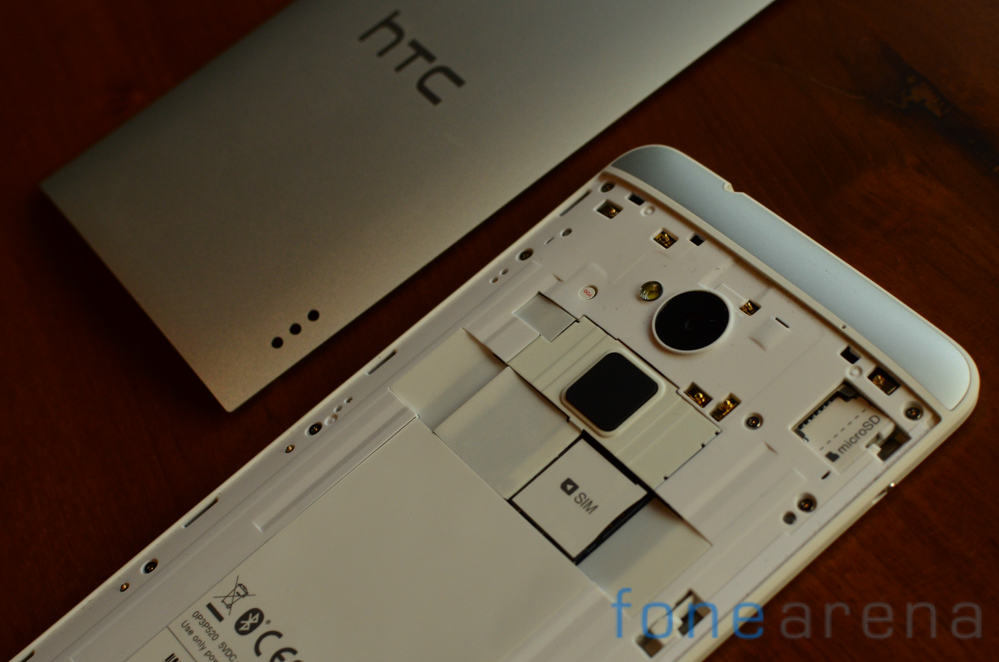
The battery is a non removeable 3,300 mAh unit. We could easily get about a day’s worth of usage out of the phone with intermittent usage. Equipped with the gigantic 5.9 inch display, this isn’t bad at all. We wish HTC had opted for a Snapdragon 800 processor instead considering the 20% battery improvement on offer with that chipset.
Conclusion
When HTC introduced the One earlier they year, they set the bar really high for the competition. The company whose market share has been dropping precariously every quarter, was believed to have hit a home run with its 2014 flagship. Their moves since then have somewhat backfired. The One Max could have become the phablet to get but by holding back its cards, HTC has relegated it to being an also ran. The One Max doesn’t have anything intrinsically wrong but other than the size, there’s absolutely nothing else that sets it apart. The build quality is borderline shoddy and the fingerprint reader implementation leaves a lot to be desired. We’re not sure the One Max is worth the substantial investment that it demands and you’d be better served by another phablet like the Galaxy Note III.
Pros
- Display
- Performance
- Expandable storage
Cons
- Panel gaps
- Average camera
- Weight



